Instead of a turbine - a fiery motor
Let's dissolve a bit of MAXA theme, recalling that 75 years ago, 28 August 1940, for the first time, the Caproni Campini N.1 jet aircraft flew off the runway of the Milan airfield Talledo. He was the world's first two-seat jet machine.
Italian reactive approach aviationembodied in the project by engineer Secondo Campini, and in metal by the famous aircraft manufacturer Kaproni, was very different from German, and not for the better. If the Germans made the main bet on gas turbine engines, the Italians tried to ensure that the compressor does not work from a gas turbine, but from a conventional piston engine. As a result, they built a paradoxical power plant with a thrust of only 700 kgf, consisting of a jet combustion chamber, an afterburner and a separate three-stage axial compressor with an external drive. At the same time, the 12-cylinder Isotta-Fraschini engine, which rotated the supercharger impellers, developed a power of 900 horsepower.
"Caproni-Campini" turned out quite heavy and cumbersome: the length of the fuselage - 13,1 m, wing span - 15,85 m, take-off weight - 4200 kg. For such a colossus, the jet engine turned out to be too thin, so the plane, despite its good aerodynamics, demonstrated very low flight characteristics during tests. Even with the afterburner on, the speed did not exceed 375 km / h, and in the discharged mode, Caproni-Campini produced no more than 330. The height of the 1000 meters of the aircraft gained as much as 9 minutes, that is, its rate of climb roughly corresponded to the aircraft of the First World War.
It is safe to say that if only an 900-strong piston engine with a drive to an ordinary propeller was installed on this machine, it would fly no worse, and perhaps even better. In general, the combined power unit, in which the gasoline engine runs only on the compressor, clearly demonstrated its inferiority, and the aircraft with such motor units have never been built anywhere else.
True, after the war, the I-250 (MiG-13) fighter was produced in a small series, in which a piston engine was also used to drive a jet engine compressor. But for the 250 XR, only an additional afterburner thrust was created, and the main thrust was provided by a screw. This scheme was also not very successful and quickly lost in competition with the TRD.
Layout scheme "Caproni Campini". On the left, the in-line piston engine and a three-stage axial compressor are visible, on the right is a jet engine with an afterburner, and in the center are fuel tanks.
Ground tests of a jet engine with the fuselage tail section dismantled.
Caproni Campini was built in duplicate. On the left - their fuselages in the assembly shop, on the right - one of the airplanes on the airfield.
The Caproni Campini had an all-metal construction, very clean aerodynamic shapes and retractable landing gear.
One of the copies of the aircraft was preserved and exhibited at the Milan Museum of Science and Technology.
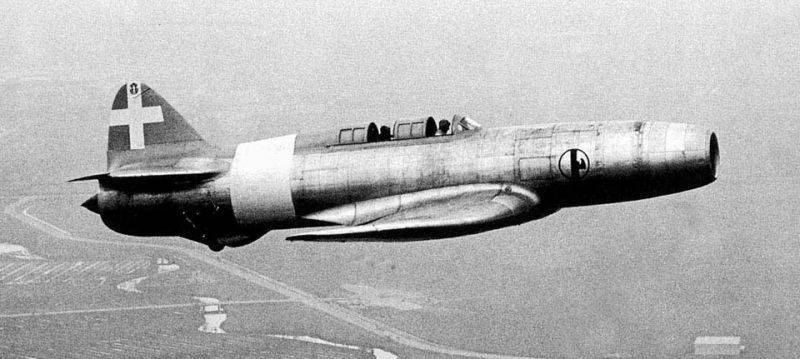

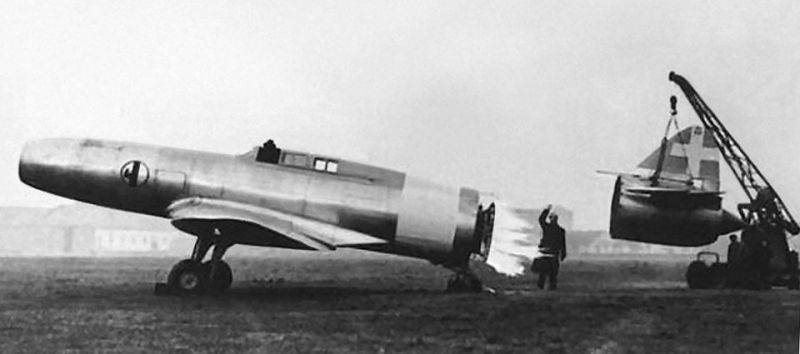

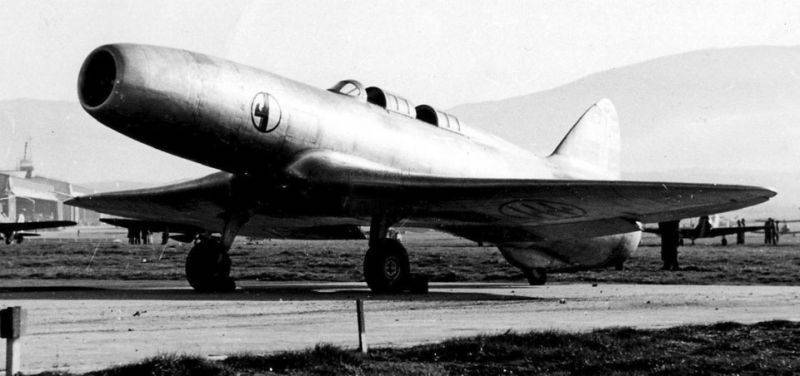
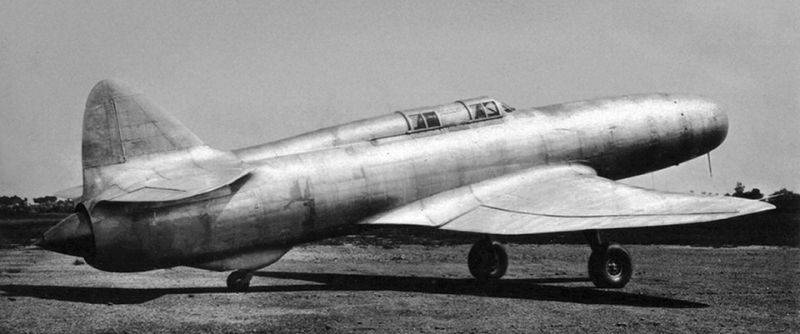
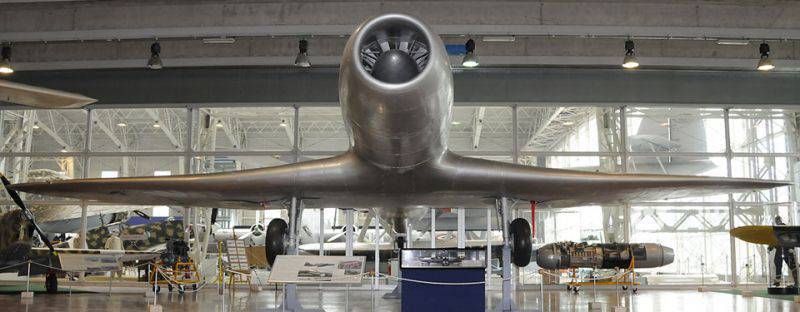
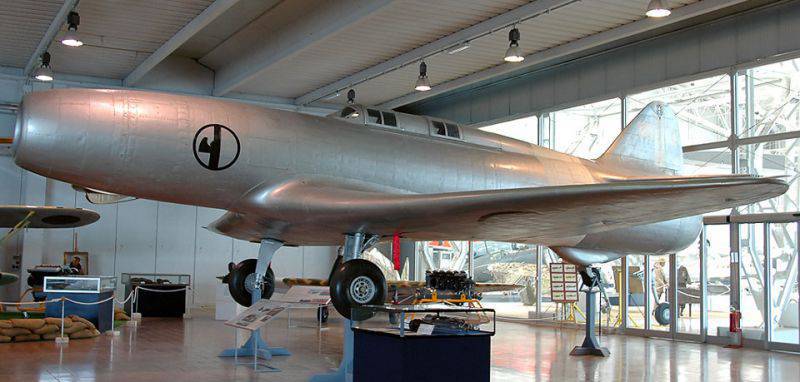
Information